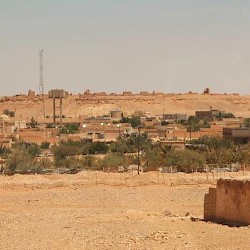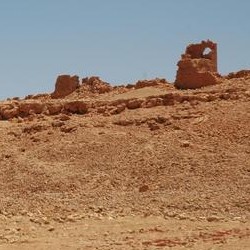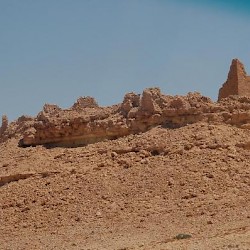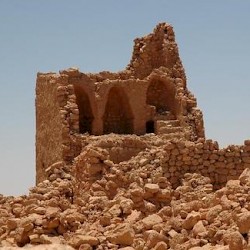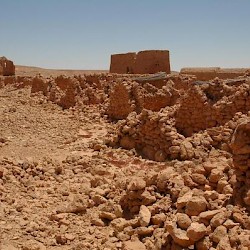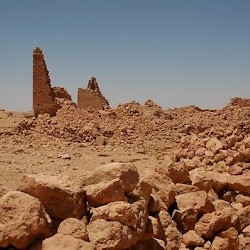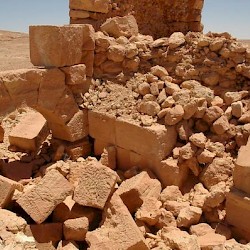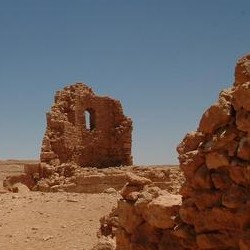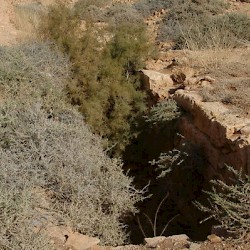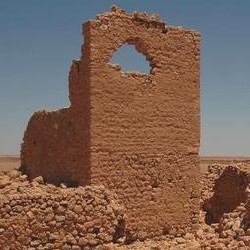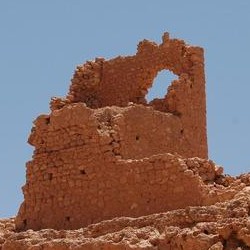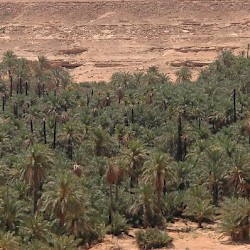Gheriat el-Garbia
Q2120559Gheriat el-Garbia: Roman fort in Libya, part of the Limes Tripolitanus.
If desert people (e.g., the Garamantes) wanted to attack the Roman Empire, they had to travel through the arid desert and needed water. By fortifying the oases, the Romans effecively shut them out from their own world. Like Fort Gholaia (Bu Njem) and Gadames, construction of the fort at Gheriat el-Garbia was ordered in about 201 CE by the emperor Septimius Severus, whose family was from Lepcis Magna. He knew the country and understood its value, and he was a soldier who knew that it was defensible. The line of fortifications he created is known as the Limes Tripolitanus.

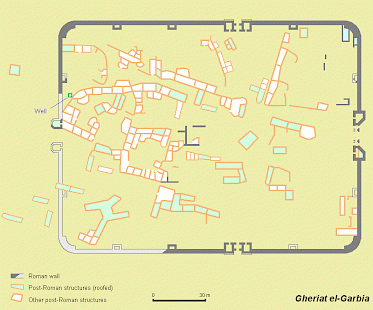
The photo above shows a panorama from the northeast, seen to the southwest. In the background, from left to right, the oasis. In the center the northeastern gate and the Cardo Maximus, the main road in the fort. All buildings within the walls are post-Roman, built by Berbers.
The fort controled an oasis and the upper reaches of a little wadi that empties itself in the Wadi Zemzem. Gheriat el-Garbia was built on a hilltop that was almost impossible to attack. Unles en enemy would approach it from the northeast, he would have to build a siege ramp, which is rather difficult in the desert.
The fort measured about c.185x135 m (24,800 m²), or double the size of the Bu Njem fort. The corners are directed to the four quarters of the compass. On the platform was a small well. Archaeologists have also identified cisterns in the northern corner of the ancient fort. The outer walls are almost entirely preserved, but the buildings inside did not survive. Berbers have reused them.
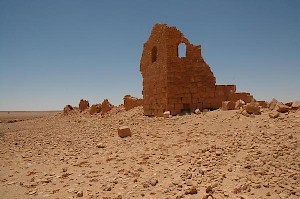
Gheriat el-Garbia was built by soldiers of the Third Legion Augusta. This can be deduced from the shape of the towers of the northeastern gate, which are not square, as is usual, but five-angled. This can only be found in settlements of the Third, which was based in Lambaesis in what is now Algeria. Gates like this can also be seen in Theveste and Bu Njem.
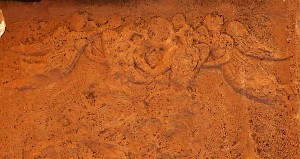
The photo to the right shows a detail of the artwork on the northeast gate (the only surviving part, in fact): two Victories and two eagles carrying a laurel wreath. There was also an inscription, from which it is clear that the fort was built in 201, when Anicius Faustus was governor. To the east (not on the photo) the remains of two (perhaps three) temples have been identified.
Because there was water and wood, a bathhouse could be constructed in the oasis itself. The remains have been identified about five hundred meters west of the fort. To the northeast was a signal tower.
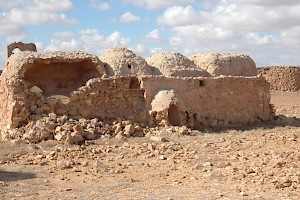
After Antiquity, other residents started to settle in the towers of Gheriat el-Garbia; the Berbers who often allowed their cattle to live there, also built the mosque that is still visible.
There is some evidence that soldiers of III Augusta were sometimes sent abroad. The Römisches-Germanisches Museum in Cologne in faraway Germania Inferior shows a tombstone of a legionary from III Augusta, and we can be confident that this man must have visited Gheriat el-Garbia too. The fort may have been an outpost in the Libyan desert, the people belonged to a world that was much, much larger.
The fort is known to archaeologists as GG1 in the catalogue of Graeme Barker e.a., Farming the Desert (1996).
